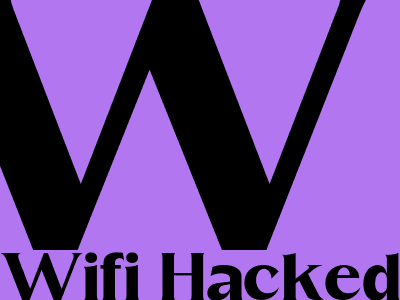Wifi Hacked: A Guide to Preventing Unauthorized Access
Introduction
In today’s digital age, Wi-Fi has become an essential part of our lives. We rely on it to stay connected with friends and family, work remotely, and access entertainment. However, with great convenience comes great responsibility. Wi-Fi networks can be vulnerable to hacking, putting our privacy and security at risk.
How Wi-Fi Networks Get Hacked
Weak Passwords
One of the most common ways Wi-Fi networks are hacked is through weak passwords. Many users choose simple passwords that are easy to remember, but also easy for hackers to guess.
Unsecured Networks
Another common security vulnerability is unsecured Wi-Fi networks. These networks do not require a password to access, making it easy for anyone within range to connect to your network and potentially gain access to your devices and data.
Malware
Malware can also be used to hack Wi-Fi networks. Malware is malicious software that can be installed on your computer or mobile device without your knowledge. Once installed, malware can steal your Wi-Fi password and give hackers access to your network.
Consequences of a Hacked Wi-Fi Network
The consequences of a hacked Wi-Fi network can be significant. Hackers can use your network to:
- Steal sensitive information, such as your passwords, credit card numbers, and personal data
- Install malware on your devices
- Control your devices remotely
- Launch denial-of-service attacks against other websites and networks
How to Prevent Unauthorized Access to Your Wi-Fi Network
There are a number of steps you can take to prevent unauthorized access to your Wi-Fi network:
Use a Strong Password
Choose a strong password that is at least 12 characters long and contains a combination of upper and lower case letters, numbers, and symbols.
Enable WPA2 Encryption
WPA2 encryption is the most secure encryption protocol available for Wi-Fi networks. Make sure your router is configured to use WPA2 encryption.
Disable WPS
WPS (Wi-Fi Protected Setup) is a feature that makes it easy to connect devices to your Wi-Fi network. However, WPS can also be a security risk. Disable WPS on your router if you don’t need it.
Keep Your Router Firmware Up to Date
Router firmware updates often include security patches. Keep your router firmware up to date to protect your network from the latest security threats.
Monitor Your Network for Suspicious Activity
Regularly monitor your network for suspicious activity. Look for devices that you don’t recognize, or for unusual traffic patterns.
Conclusion
Protecting your Wi-Fi network from unauthorized access is essential for safeguarding your privacy and security. By following the tips outlined in this article, you can help to keep your network safe from hackers.

Comments